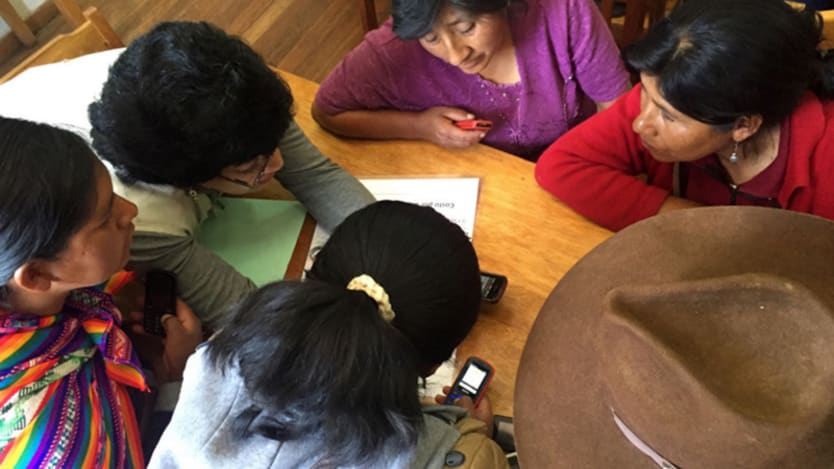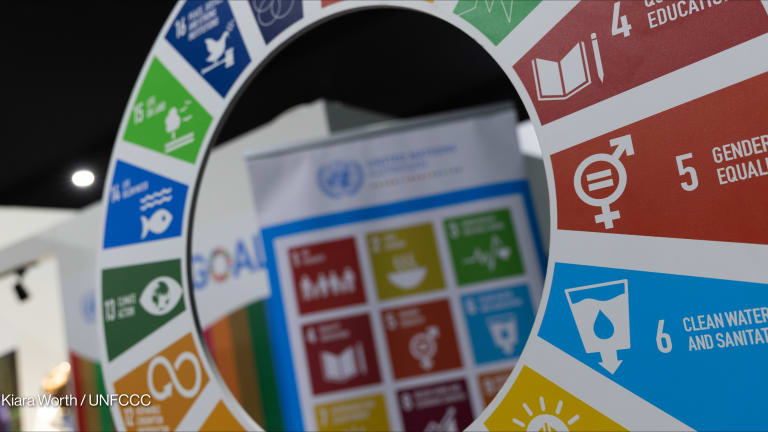
Peru is preparing for the launch of a nearly nationwide mobile banking system that aims to expand financial access to millions of the country’s unbanked citizens. The mobile money platform will allow users to transfer funds to friends, pay their bills and top up their phones with even the most basic of first generation cellular devices.
But mobile money isn’t a particularly new phenomenon anymore, as mobile money has become a popular service in developing countries. But what makes this different is that the real innovation is in the process behind the platform and the collaboration among the actors that are putting it together.
Billetera movil
BIM — an abbreviation for “mobile wallet” in Spanish — is a project that has brought together three of Peru’s main telecommunication companies and 32 of the country’s largest banks. Whereas mobile money platforms in most other developing countries are typically offered by one bank partnering with one cell phone company, Peru’s will bring together the main entities from both industries.
“What makes Peru different is that pretty much all of the major financial institutions and telecom companies have come together to use one shared technology,” Jeffrey Bower, a digital finance specialist with the United Nations-based Better Than Cash Alliance, who is helping to launch BIM, told Devex.
Rather than competing against each other to acquire customers — essentially dividing up the pie and walling off customers into individual mobile payment systems — the banks are collaborating to bring as many people as possible into the same system.
“It is one platform that works across all phone companies and all the banks that is built and designed for financial inclusion,” Bower said.
That type of collaboration is beneficial, but does it undermine competition between traditional head-to-head competitors? The banks, according to Bower, see plenty of market opportunities to go around. In a country of 30 million people, roughly 70 percent of the population doesn’t have access to financial services. They include young and old people as well as rural and farming communities.
For the banks, the market opportunity is not only the mobile payment platform but the various market segments that make up the unbanked. And once a customer is in the system, the bank can compete on its other suite of financial services. Banks are essentially sharing a customer, rather than controlling the customer.
If you can’t beat them, join them
BIM itself originates from a disruption to Peru’s traditional competitive banking model. In 2011 telecom giant Telefonica partnered with MasterCard to launch a mobile payment system called Wanda. That same year, Claro, another telecom provider, partnered with Citi to offer a similar platform. Both programs forced banks to compete with telecom providers on what was their traditional territory.
The banks, realizing that it would be difficult for them to reach scale acting individually, formed an initiative through the Peruvian Banker Association to develop a common approach to digital money. They eventually settled on an “open loop” platform designed by Swedish tech firm Ericsson, that brought together many entities under the auspices of financial inclusion.
The platform, BIM, has been fully functioning for the past three months, even though its official launch is scheduled for Feb. 16. An organization controlled by the Peruvian Banking Association owns 51 percent of the platform, with the rest of the ownership divided among individual banks. The three main telecomm providers that will carry BIM account for about 97 percent of mobile phone users in Peru.
The Peruvian model
The collaboration between different financial and telecom entities is what the U.N. and BIM’s partners refer to as “Modelo Peru” — the “Peruvian model” of sharing assets and development costs in order to build a common financial infrastructure.
“To grab bits and pieces of the market doesn’t make sense,” said Bower. “To collaborate and take advantage of existing infrastructure in order to enable future competition is something unique that hasn’t really been seen elsewhere.”
Tight collaboration among industry competitors can raise potential red flags of antitrust issues and unfair play. Companies are taking the standard precautionary measures to avoid that. But the system’s “open loop” feature means that any bank is free to run their own platform, should they decide, and connect it to the BIM network.
The use of existing infrastructure — both financial and technical — accounts for the differences between BIM and other mobile payment systems in developing countries. Kenya’s widely popular M-Pesa system is the product of one telecom company, Safaricom. As a result, Bower said, the telecom company effectively controls Kenya’s digital financial infrastructure of payment networks, branches and access points.
In Peru’s case, there is a vast existing network of about 30,000 bank branches that will now be repurposed and included in the mobile network. The presence of an already robust financial and telecom infrastructure is itself partly due to Peru’s status on the development ladder. The country’s economy has expanded rapidly in the past decade and it is officially classified as an upper middle income country by the World Bank.
There is still much to be done for BIM to reach scale. The challenge is to grow the network from 30,000 bank branches to whatever is necessary. BIM’s goal is to promote financial inclusion and it will be overseen by Peru’s former minister of social development who heads the principal organization that manages BIM. In a country of Peru’s geography, that will require extending branches either high up in Andes mountain valleys or deep in the Amazon.
And with the shift from cash to electronic payments comes the challenge of building acceptance among users and getting them to trust the system. Often when a large organization switches to electronic payments people immediately rush to withdraw funds when they are notified of a payment, which drains local branches of their cash, Bower said.
It is a growing pain that Peru’s government can expect when paying out various subsidies using the system, but it can be overcome with some education and coaching about personal finance management.
Mobile money, through the support of multistakeholder initiatives such as the U.N.’s Better than Cash Alliance, is becoming a preferred norm in developing countries for all of its benefits — security of transaction, safety over cash and proliferation of cellular technologies. Peru’s model of private sector collaboration to foster financial inclusion, if successful, may be a transformative testing ground for the future of digital banking.
Join Devex to network with peers, discover talent and forge new partnerships in international development — it’s free. Then sign up for the Devex Impact newsletter to receive cutting-edge news and analysis at the intersection of business and development.








